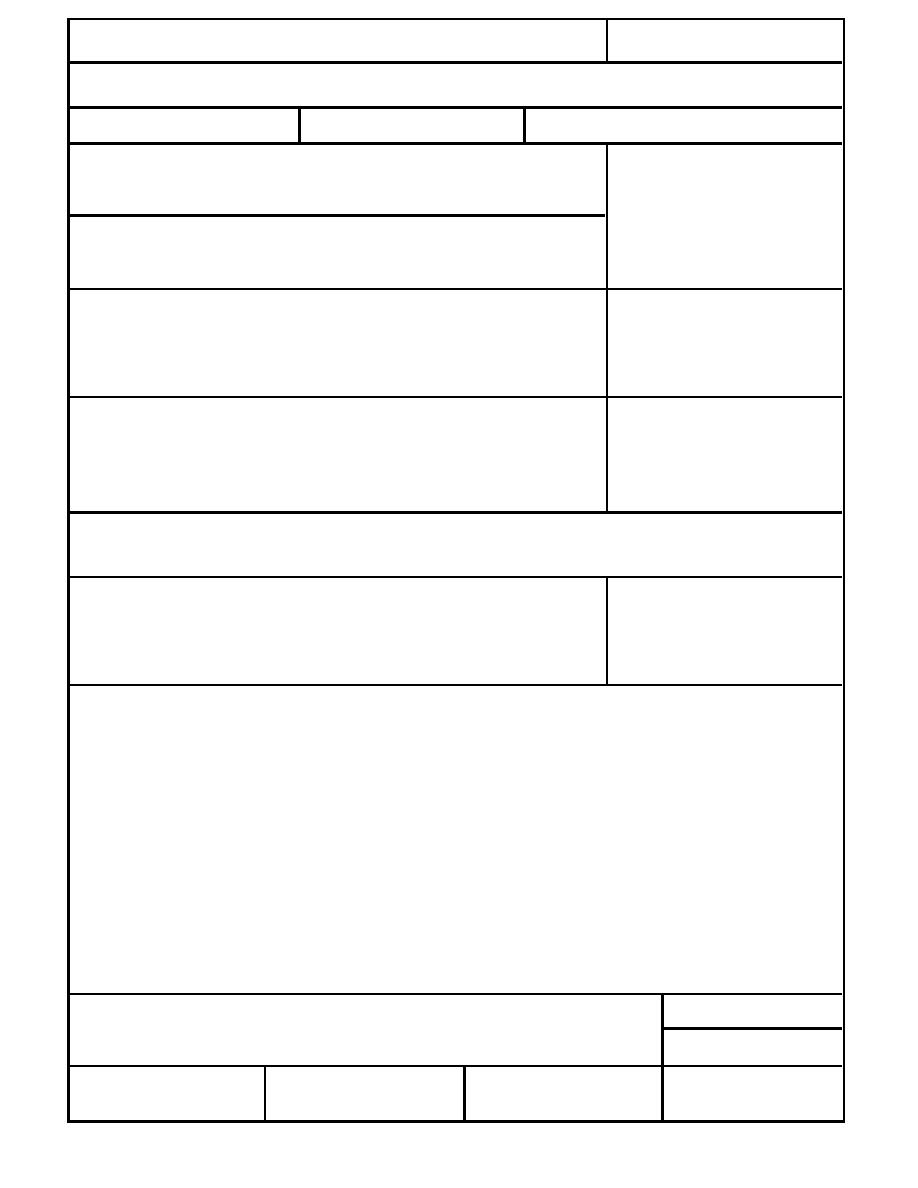
Form Approved
REPORT DOCUMENTATION PAGE
OMB No. 0704-0188
Public reporting burden for this collection of information is estimated to average 1 hour per response, including the time for reviewing instructions, searching existing data sources, gathering and
maintaining the data needed, and completing and reviewing the collection of information. Send comments regarding this burden estimate or any other aspect of this collection of information,
including suggestion for reducing this burden, to Washington Headquarters Services, Directorate for Information Operations and Reports, 1215 Jefferson Davis Highway, Suite 1204, Arlington,
VA 22202-4302, and to the Office of Management and Budget, Paperwork Reduction Project (0704-0188), Washington, DC 20503.
1. AGENCY USE ONLY (Leave blank)
2. REPORT DATE
3. REPORT TYPE AND DATES COVERED
April 1996
4. TITLE AND SUBTITLE
5. FUNDING NUMBERS
Ice Accretion in Freezing Rain
PR: 4A762784AT42
WU: CS-W03
6. AUTHORS
Kathleen F. Jones
7. PERFORMING ORGANIZATION NAME(S) AND ADDRESS(ES)
8. PERFORMING ORGANIZATION
REPORT NUMBER
U.S. Army Cold Regions Research and Engineering Laboratory
CRREL Report 96-2
72 Lyme Road
Hanover, N.H. 03755-1290
9. SPONSORING/MONITORING AGENCY NAME(S) AND ADDRESS(ES)
10. SPONSORING/MONITORING
AGENCY REPORT NUMBER
11. SUPPLEMENTARY NOTES
12a. DISTRIBUTION/AVAILABILITY STATEMENT
12b. DISTRIBUTION CODE
Approved for public release; distribution is unlimited.
Available from NTIS, Springfield, Virginia 22161
13. ABSTRACT (Maximum 200 words)
Ice accreted on structures from freezing rain causes both increased vertical loads and increased wind loads, due to
the larger projected area of the structure. Structural failures initiated by ice loads frequently cause millions of dollars
of damage to overhead power and communication lines, towers, and other ice-sensitive structures. There is little
information on ice loads to use in the design of these structures, so freezing-rain models have been developed for
use with weather measurements to determine the severity of accreted ice loads from historical data. This report
describes a detailed heat-balance ice accretion model, including the important heat fluxes in freezing rain and
allowing the accretion of runoff water in the form of icicles. It also presents a simple algorithm for calculating the ice
load on components with different diameters and cross sections. Collision efficiency in freezing rain and the
calculation of the wind-on-ice load are also discussed. Model results are compared with the ice load measured during
a recent freezing rain storm, and to each other, using 45 years of weather data from Des Moines, Iowa.
14. SUBJECT TERMS
15. NUMBER OF PAGES
Collision efficiency
Ice load
Wind-on-ice load
31
Freezing rain
Icicles
16. PRICE CODE
Ice
Rain
17. SECURITY CLASSIFICATION
18. SECURITY CLASSIFICATION
19. SECURITY CLASSIFICATION
20. LIMITATION OF ABSTRACT
OF REPORT
OF THIS PAGE
OF ABSTRACT
UNCLASSIFIED
UNCLASSIFIED
UNCLASSIFIED
UL
Standard Form 298 (Rev. 2-89)
NSN 7540-01-280-5500
Prescribed by ANSI Std. Z39-18
298-102





 Previous Page
Previous Page
